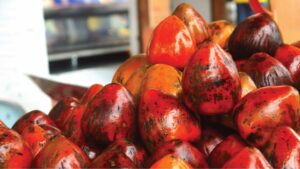Before going to Colombia, I received tons of rave reviews from other travelers. Everyone attested to the fact that Colombia was a captivating country full of colorful culture, welcoming people and incredible history. All who had visited Colombia had completely fallen in love. Actually, out of all the travelers I talked to, Colombia was most people’s favorite stop in all of South America.
BUT, the one thing in Colombia that no one seemed too enthused about was the food. All the reviews were pretty much the same. “Colombian food is really bland and boring.” “It’s flavorless.” “It’s nothing to write home about.”
Still, as someone who will eat pretty much everything and anything, I was eager to give the local cuisine a chance to prove the rumors wrong.
So, as usual, when planning my trip to Medellín, I let my taste buds take the lead and one of the first things I booked was a food tour. I decided on La Mesa Food Tour’s Colombian Street Food Tour, first, because it fit into my schedule perfectly and secondly because it seemed like just the tour to clear up all the confusion about Colombian food. It also happened to be one of the more affordable food tours I’ve seen. I was excited to go in with an open-mind and give local food in Medellín a fair try.
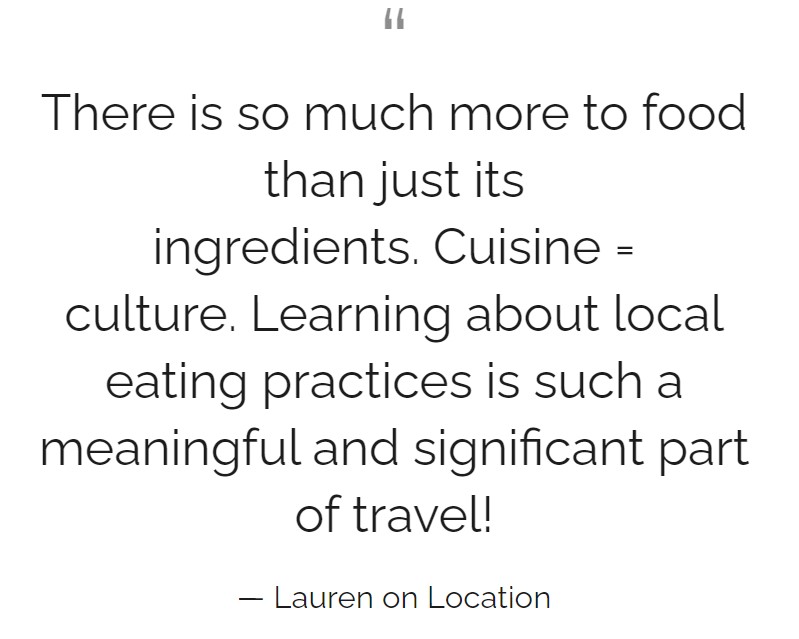
Our tour guide led us through the area’s lively streets where we got to try lots of tasty traditional Colombian bites. We visited several street stalls, took a trip through a colorful local market, sat down for a hearty home-style Colombian lunch and ended with a mysterious desserty drink. We learned all about the local Paisa culture and were sent home fully satisfied and ready for an afternoon siesta.
It was a wonderful afternoon full of interesting information and tasty treats. The dishes we tried blew my bland and boring expectations out of the water. As per usual, you can’t believe everything you hear. In Colombia it’s all about what you eat and where you eat it,which is exactly why I LOVE food tours like La Mesa.
Unless you’re living under a rock somewhere out in Guam, then you probably already know something about Empanadas. These tasty stuffed pastries are a pretty significant part of Latin culture as a whole and they can be found in countries all over the world. If you somehow didn’t already know, Empanadas are usually semi-circular shaped turnover pies that are eaten as snacks, as quick meals and at special events such as holidays, festivals and celebrations. Each Latin American country (and sometimes even specific regions within a country) has their own distinct variation of empanadas, whether baked or fried, sweet or savory, meat or vegetarian- the combinations are literally never ending.
SO, WHAT SHOULD YOU EAT IN COLOMBIA?
In the case of the traditional Colombian version of an empanada, it’s a pretty classic savory concoction that usually contains potato, beef, onion and cilantro. They are pan-fried, have a cornmeal dough shell and are often served with a hot ají sauce on the side. For our first stop of the day, we picked up a few of these spicy crispy little corn pastries at a corner street stall. After months of baked bread empanadas in Chile, they were a very welcome change!
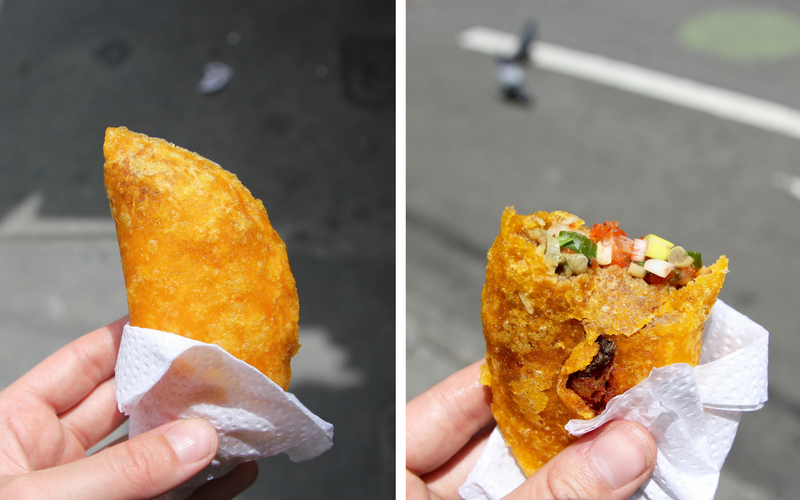
AREPAS & POSTOBON – A PERFECT STREET FOOD PAIR
In Colombia, Postobón gives the Coca Cola Company a run for its money. It’s by far Colombia’s most popular beverage brand. They produce a pretty extensive variety of beverages including soft drinks, fruit juices, flavored teas, energy drinks and even their own bottled water. Probably their most well known fizzy drink is called “Colombiano,” which is like a “cola champagne” with a taste similar to that of cream soda.
Arepas are a popular type of round bread patty very typical of both Colombia and Venezuela. They are made of corn dough or cooked flour, usually flat and almost always served with some kind of accompaniment.
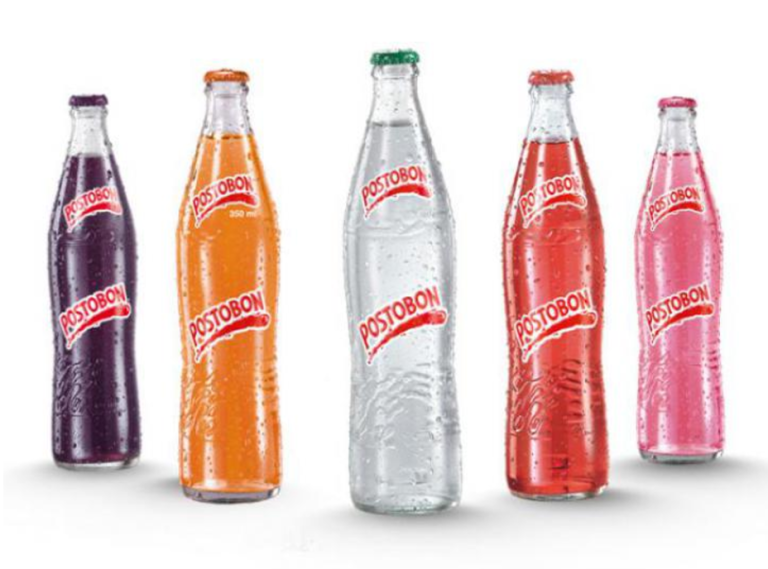
They can be baked, grilled or fried, eaten as a snack or for breakfast, lunch or dinner and served plain, with toppings or split in half and stuffed like a pita. The majority of Colombians eat at least one arepa daily (yes, I said at least), so you can guess they are a huge part of their culture.
While in Colombia, it’s pretty hard to avoid trying arepas and let me tell you, I tried my fair share of these little flour patties. Honestly, for the most part, I was unimpressed. Unless done preciously right, arepas can be chalky, dense and flat out boring. Thankfully, arepas de choclo are no ordinary arepas.
As our second stop on the food tour we stopped at a small unassuming street stall and were each handed half of a corn arepa fresh off the grill. Immediately, I knew this would be the arepa for me. Biting into this moist savory corn cake topped with smooth butter and a thick slab of fresh cheese was like sinking my teeth right into heaven. Seriously divine. I could definitely eat one of these every day. My mouth is watering just writing about it ..
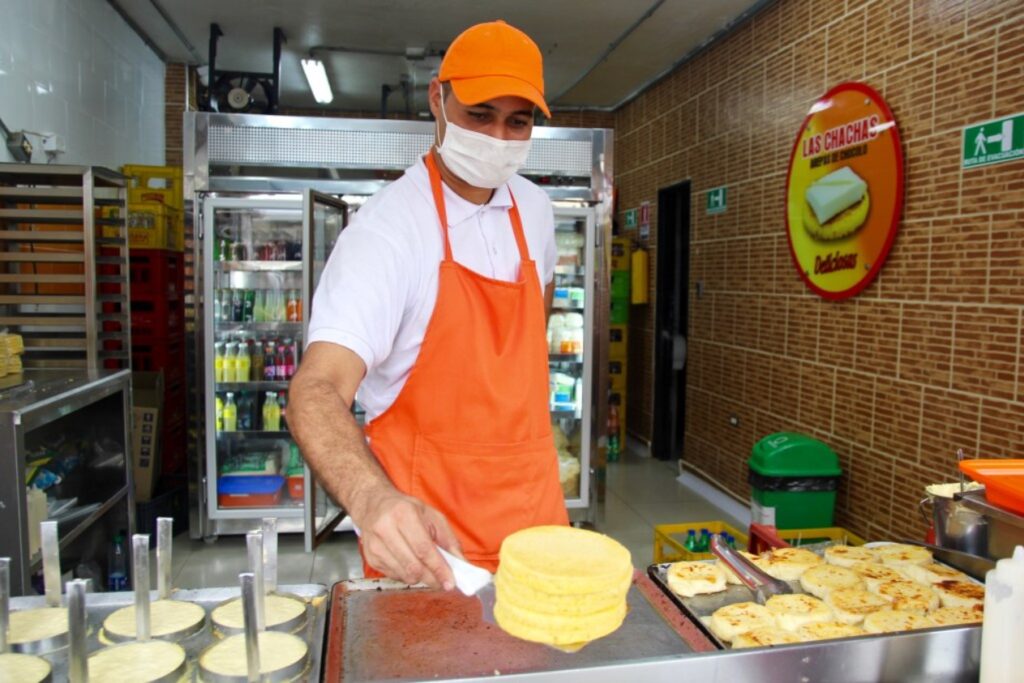
EXOTIC FRUITS & JUICES
Colombia is home to some of the world’s most exotic tropical fruits and because of the country’s wide range of climates there is a crazy array of produce to choose from. Rare and extremely sought-after fruits are commonplace in Colombia; they’re found at most markets, usually locally grown and incredibly affordable!
For our third stop of the day, we went for a leisurely stroll through the Envigado market, trying a smattering of these exotic fruits and their juices along the way. We admired the interestingly shaped and colored fruit at the different stands, while breathing in their fragrant aromas and learning about their flavors and origins. Most of the fruits we tried had names I could hardly even pronounce!

JUICES
- Guanábana- the guanábana fruit has a dark green skin and is oval shaped (sort of resembling an avocado), but with small prickly spikes on it’s surface. Its insides consist of a white smooth pulp and big black seeds and it has a slightly acidic taste. It’s commonly used to make flavored sweet mixtures like milkshakes, ice creams and jams.
- Borojo– Borojo is from the rainforest and historically was used for a little bit of everything, even as an aphrodisiac. It’s round and brown and has a really interesting, kind of strange sweet and sour taste. We had it mixed with milk for a smooth yogurty texture.
- Lulo– tangy, citrus-like fruit native to Northwestern South America. Looks like a yellow tomato on the outside and resembles a kiwi on the inside.

FRUITS
- Lulo– see above.
- Tomate de arbol– bitter tasting yellow or orange mini egg-shaped fruit.
- Granadilla– a type of passion fruit, round with a thick yellow outer skin and filled with black seeds surrounded by pulpy membranes. Very sweet!
- Yellow Pitaya- known in English as yellow dragonfruit. Vibrant yellow spiky skin with a white sweet inner flesh and small black sesame seed looking seeds. Yellow dragonfruit is known to have many health benefits such as being good for digestion and is rich in vitamin C and antioxidants!
- Uchuva- a small yellow fruit that looks like a cherry tomato. Has a creamy pulp which you suck out from the skin and can be tart, sweet or even extremely sour.
- Zapote- native to rainforest climates and tastes very similar to a papaya.
BANDEJA PAISA
After all of our previous tastes and samplings, we head over to a local restaurant for the main event, a traditional Colombian home-style lunch. The main course of the meal was two immense servings of Bandeja Paisa, the ultimate Colombian comfort food. This dish is named for the region of its origin, “Paisa,” and for its tendency to take up the entire surface of a platter, in Spanish “bandeja.” Bandeja Paisa is a feast fit for a king and one heavy helping of food sure to leave you satisfied.
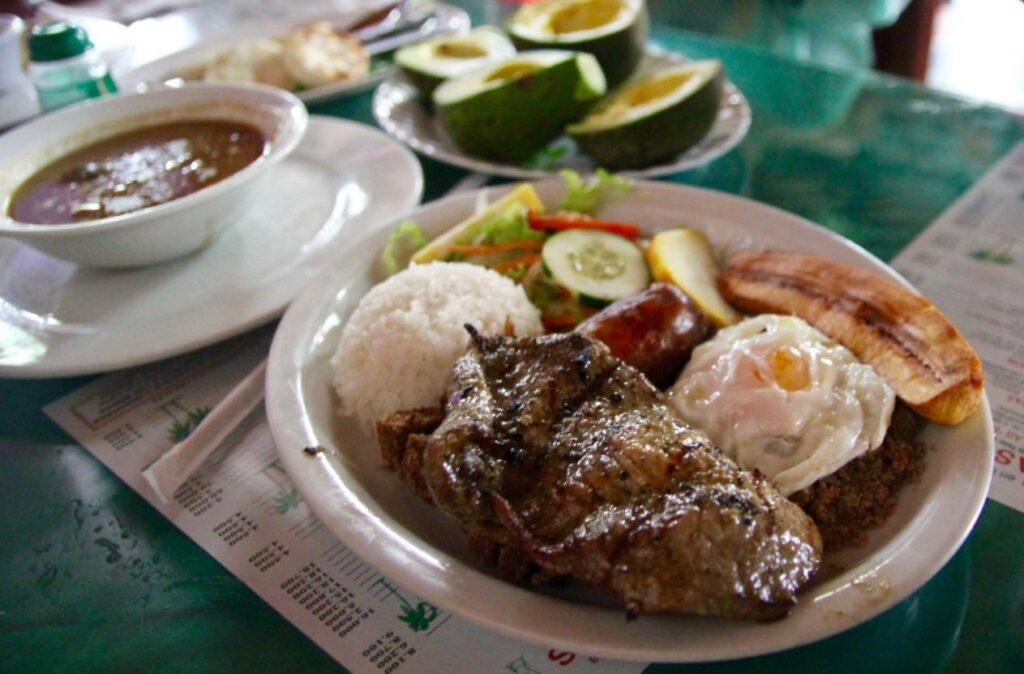
Bandeja Paisa is served as a sort of sampler with any combination of a variety of meats including “powdered meat,” chorizo, fried pork belly, grilled steak and blood sausage. It also traditionally includes a fried egg, a bed of white rice, baked plantains and a side of Paisa style pinto beans. You’ll also find that Hogao sauce (a tomato, garlic and onion mixture), avocado, basic arepas and sliced limes are typically served with the dish. I told you it was a feast!
It is recommend to be shared and eaten as a midday meal to allow adequate time for digestion and because you may very well need a siesta immediately afterwards!
COLOMBIAN SWEET TREAT – SALPICÓN!
Just when I thought I was ready to pop, we went to an ice cream parlor for some Salpicón. Salpicón is a very typical “desserty” beverage in Colombia that is pretty much a fruit cocktail on crack. Just like any fruit cocktail, salpicón starts with a base of assorted fresh fruits- commonly some combination of pineapple, mango, apple, bananas, grapes, strawberries, papaya, watermelon, or whatever other tropical fruits you happen to have on hand– but that’s where the similarities stop. This dessert makes a bold move with the addition of fizzy Postobón, a dollop of vanilla flavored ice cream, some sweetened condensed milk, a rolled wafer and, to top it all off, a sprinkling of shredded mild white cheese.
![]()
The flavor was a bit crazy and definitely very interesting at first, but after a few bites salpicón really grew on me. We had the option to order it with or without the shredded cheese, but I figured ‘when in Colombia’ and just went for it. Surprisingly, the cheese was a really nice touch!
This post was written by Lauren of Lauren on Location and originally appeared on her website. We were happy she could join our Medellin Street Food Tour, which she highly recommends as describes fun, informative and super affordable. Don’t miss out on experiencing Colombian culture through your taste buds!


